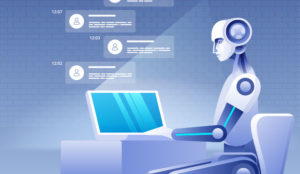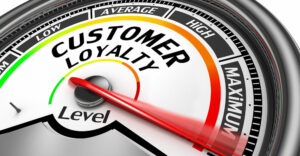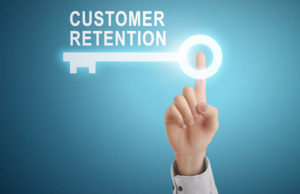CRM and CEM/CXM are essential tools for maintaining business flow with customers. Although similar, they have distinct differences. To choose the right one, organizations need to go beyond the alphabet soup of these hi-tech business applications.
Customer relationship management (CRM) software tracks interactions with sales prospects and customers. CRM systems can provide many benefits, but not every business needs one.
Customer experience management (CEM or CXM) is a more extensive information collection process to track, oversee, and organize every interaction between a customer and the organization throughout the customer lifecycle. It goes deeper into the customer experience and focuses on insight from their unique perspective by listening to customers, analyzing their feedback, and understanding their viewpoint to optimize the customer experience.
In short, both tools optimize customer relationships. How they do this makes all the difference. CRM facilitates relationship building for the organization. CXM focuses on monitoring and improving the experience for the customer.
A Different View
Centralizing all tools and customer-impacting services into one system delivers great efficiencies for the business. However, enabling your customers to have the same experience with you in real time is the difference between a CRM and CXM, according to Ryan Cantor, vice president of product and marketing at Thryv.
The CRM market is growing every day with new entrants. Centralizing hordes of data for all the employees of the business to view in real time is not a new concept. But few enable the end customer to partake directly in this journey, he noted.
Siebel Systems first pioneered CRM software in 1997. The goal was to create a single, centralized location for all customer information. This would enable employees to access the CRM and become more productive, efficient, and able to answer questions more accurately based on real-time information.
In many companies that opted for quick adoption, the software created little more than a glorified centralized spreadsheet. Its original premise went beyond employee efficiency. It was supposed to automate marketing efforts and sales functions to improve the customer’s experience.
Cantor believes CRM for many companies perpetuates a missed opportunity to grow the customer experience. To fix that, he believes it’s time for companies to transition to CXM software. One option is his company’s CXM platform.
CRM Buyer pursued the potential transition process — and the impact of both CRM and CXM products — in a conversation with Cantor.
CRM Buyer: Why is CRM a failure for users?
Ryan Cantor: Being able to log in, update their information, communicate with the business, schedule, pay, and share. Often, this is a complex integration or custom web development work that is outside the capabilities of most small businesses.
Centralizing the data speaks to the efficiencies you can get as a business. It’s valuable, and it has the “potential” to improve the customer’s experience. This can be demonstrated when a customer calls two different employees, and each employee is operating with the same real-time set of facts.
However, in most businesses, this potential is never truly realized because it is limited to these personal interactions and not extended to the electronic or technology-enabled experience the customer gets. The companies who have done this part well include Amazon, Dominos, and Apple. They have done this with millions upon millions of development, code, and integrations to deliver what ultimately appears as a seamless customer experience online.
How do you do this with CXM?
Cantor: When customers have the ability to book appointments on your website, log in to reschedule, ask questions, make payments, download historical receipts, read and share documents, and more, only then have you moved toward actually improving your customer’s experience.

Every aspect of Thryv has two views. The business view and the customer view. We constantly ask ourselves, “How does the customer engage with the business?” Let’s say a new piece of functionality is added, such as our “packages,” for example. (Packages allow Thryv customers to sell services in multi-packs — like yoga classes.)
Yes, it is important for the business to track package assignments, package usage, etc. But it is also important that a consumer can buy a package, track their usage, know when their package expires, and visually see every time they book a service online that their package was used as payment and what their balance is.
It takes discipline to do this, and some would argue it requires twice as much work. Technology is not just built for one audience (the business owners), but for two (the company and its customers).
The experiences aren’t the same. They don’t have the same permissions or capabilities, and often, you need to simplify and get to the root of the use cases and desires of both groups to determine how to design the system and what to prioritize.
How is automated customer experience different from CXM, which I’m guessing is a hybrid of CRM and ACX?
Cantor: Marketing automation is a form of automating the client experience. To further exemplify the difference, it is really about whether you want a one-way dialog pushing customers through a path or whether this experience was designed to be fully interactive — beyond whether someone opened an email or clicked to a website.
CXM really speaks to all of the bespoke and fully connected touchpoints in a customer’s experience. A trigger-based workflow to nurture, follow up, or invite back is nothing new.
CXM speaks more to being easy to do business with at all times. It ensures that your customers can easily download their payment receipts around tax time next year without jumping through hoops. It means that when you ask for HOA approvals for a construction process, you have made it easy for the consumer to upload them to you and that they are organized properly on the back end to prevent asking for them again or misplacing them.
How can companies transition to CXM?
Cantor: The first step is an audit to acknowledge the gaps in your current platform or lack thereof. Have a close friend secretly shop your business, go to your website, browse, schedule, and submit a form. Track follow-up time. Track the buying experience. Is there friction? How long until you get your estimate? How easy is it to schedule? How was the follow-up? Professional? Did the emails go to spam?
Until people recognize and appreciate there is a problem, it’s hard to fix it.
The second is the evaluation of tools and systems in the marketplace. Doing the first step will make a small business owner more informed during the demo and the testing phase. If you know the gaps and the problems, you know what to look out for and what to test in any new solution.
Lastly is the switch. Is it a flash cut on a future date? Do you migrate data? Do you live in two systems for the next 30 days while your old jobs finish up? This one is a personal preference. We’ve seen it go both ways.
Is the move to CXM an all-or-nothing strategy, or can companies adopt some parts and ignore others?
Cantor: Going from zero to 100 is probably too much for any small business owner or their teams to digest. The important part is to start someplace and pick a platform with future planning in mind. You don’t want to pick a platform only to find out it won’t do automated review generation. You may not be ready yet to jump to that, but you should have a vision of where you want to be three, six, nine, or 12 months from now. The platform shouldn’t be the barrier to getting there.
We’ve seen some success with integrating a bunch of platforms together, but ultimately what we’ve found is every email looks different, comes from a different sender, and ultimately creates a disjointed experience for end consumers.
An invoice from one platform, a payment receipt from another, and a booking confirmation from a third. This gets out of control pretty quickly, and we’ve found it also tends to be more expensive.
So start with the end in mind, then eat the elephant one bite at a time, incrementally improving the customer’s experience and expanding usage of the platform until you’re covered end-to-end. Then, start over with testing improvements, changes, and tweaks.
Lastly, all good software should keep getting better. So just when you think you’re done, there should be something new to learn, adopt, and start using to help your customers even more.
How budget-friendly is the transition process?
Cantor: It shouldn’t break the bank at the small business level. Be wary of providers who charge you hundreds of dollars for the software and then thousands of dollars for training or professional services to get started.
This is a true partnership, and a partnership means mutual support and assistance. For a true end-to-end platform, depending on the size of your business and the logins needed, it should be all-in, less than US$1,000 a month.
Is the CXM strategy a complete rip-and-replace process, or can both models co-exist to suit various departmental needs?
Cantor: I think you’ll find the implementation can happen over time, but in the end, customer-facing functions adopt the CXM platform, and other departments that aren’t customer-facing can continue to use platforms that integrate with it.
For example, the accounting team will need to use accounting software. It’s not important for the customers to have access directly to the accounting software (probably better if they don’t). It is important that customer-facing actions like invoices, estimates, payments, installment plans, or subscriptions all synchronize with the accounting software automatically.
Is CRM bound to fail for all companies? What are the warning signs that it is time for a transition?
Cantor: I think, for the most part, yes. The warning signs can be found in two simple words: So what?
We track this piece of information about our customers in this drop-down menu…So what?
We know precisely when a customer opens one of our emails and clicks on it…So what?
What happens next? What is the business actually doing with this information? Not what they could do, want to do, or even plan to do. What is the business actually doing with it?
Any closing thoughts on your view of the lack of CRM’s sustainability?
Cantor: You’ve seen a push in the last 12 to 18 months to bolster the database-in-the-sky problem with artificial intelligence. Since the employees aren’t using the CRM to affect change, drive efficiencies, or increase revenue, CRM companies are starting to integrate and build elaborate AI components to drive the recommended outcomes and automation needed to extract value.
That’s a step in the right direction for some businesses, but most AI requires significant data to be effective, so at a small business level, they are either combining data across multiple businesses to get a large enough sample or simply serving up highly obvious outcomes/recommendations. The part that generally is still lost is the end customer involvement in the process.
One of the key differentiators for small businesses is maintaining a local personal touch and experience. Adopting technology to improve efficiencies and support growth shouldn’t force them to give up those competitive advantages.


























































